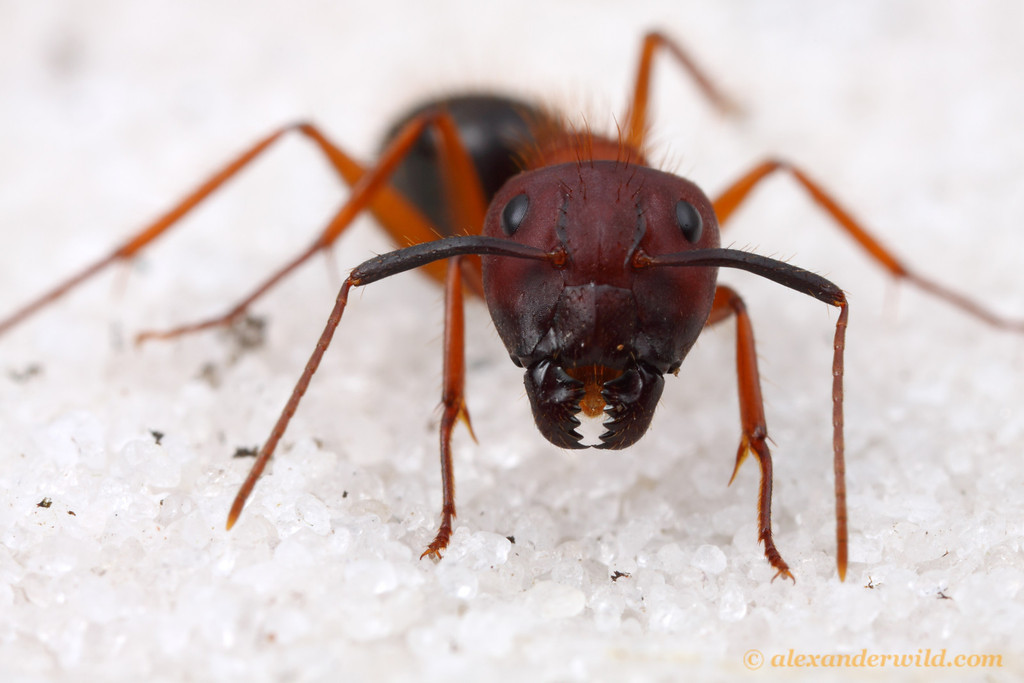Ant researchers have long known that ants swap food and enzymes orally through a process called “trophallaxis” (tro-fuh-lax-is). Ants use a special organ, the crop, as a kind of “social stomach” – many workers eat food only to regurgitate it into larvae. But a recent study has found that this ant spit may serve another critical purpose: communication.

In the study, Dr. Adria LeBoeuf and colleagues investigated the chemicals that are present in orally transmitted fluids in a carpenter ant species, Camponotus floridanus. To their surprise, they found that many of the proteins and other compounds in the ant spit were not related to food but to other functions. One of the compounds, juvenile hormone, is known to be highly important in the regulation of larval growth, and its presence in the ant spit suggests regulation of larval development in an ant colony may be partially controlled by trophallaxis.
Such a diversity of important, non-food compounds in ant spit suggests that ants engage in communication through trophallaxis. However, further studies will be needed to firmly establish that ants regulate these chemicals in response to environmental conditions. Regardless, this work by LaBoeuf and colleagues may turn ant spit into a focal component of research on ant communication.
